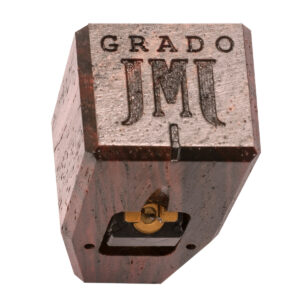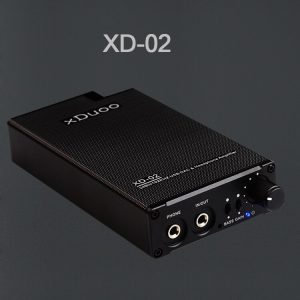- Beschrijving
- Extra informatie
- Help
Beschrijving
Beschrijving
Want to add speaker capability to your desktop? Meet Rekkr, a tiny, Magni-sized amp that’s dead-quiet, powerful enough for satisfying nearfield listening, and packed with leading technology and advanced protection for exceptional performance and reliability.


2W? You gotta be joking, right? Will I even hear that?
To answer those questions in order: yes, no, and absolutely.
2 watts can’t possibly be enough for any speaker, can it?
Have you ever watched the real-time power output of an amp with power meters? It’s a lot smaller than you think. Heck, most of the time they’re operating at a fraction of a watt. Rekkr isn’t an absolute powerhouse, but it’s designed to drive speakers—and drive them a lot louder than you think. Heck, one of our guys uses Rekkr with KEF LS50s, which aren’t exactly the most efficient speaker on the planet, nor the easiest load.
Efficient? Load? All these new terms! What do they mean?
Okay, cool, let’s break it down.
- Efficiency: this refers to how well the speaker turns watts into sound. A low efficiency speaker will need lots of watts to run loud. A high efficiency speaker will need less. Speaker efficiency is rated in terms of dB. A 95 dB efficient speaker will be 10x as loud as an 85dB efficient speaker for the same power input.
- Load: this refers to the speaker impedance. Speakers are usually rated as “8 ohm nominal” or “4 ohm nominal.” The lower the number, the more current the speaker needs, or the “harder” it is to drive. These ratings get a bit dicey, because some “8 ohm” speakers actually dip down to 2-3 ohms at certain frequencies, making them harder to drive than their nominal impedance suggests.
I still don’t know what all this means!
In terms of choosing speakers for Rekkr, you’ll want to look at efficient designs if you want to run loud. 85+dB will be fine for the desktop. 90+dB efficiency will get lease-breaking loud—heck, you can use Rekkr as a small-room speaker amp at that point! Sometime we should try to set up a couple of Rekkrs with Klipsch Jubilees, which are like 110dB efficient. That’ll peel paint!
But will it go loud?
Put Rekkr on your desk, connect it to most normal pairs of speakers, and give it a try. If you share walls, expect to hear the neighbors yelling to “turn it down!”
So this is just a desktop amp?
It’s best for desktop and nearfield applications, yes. In some situations, with very efficient speakers, it could serve as an amp for in-room listening. But you better be looking at 95+dB efficient speakers for that.
Can I stack this with your desktop headphone amps?
Some of them, yes. It’s exactly the same size as Magni and Modi, and will probably be fine sitting on a Magni. However, that stack might get pretty hot in warm rooms (over 25 degrees C). So sit them side by side.
Can I use it with your preamps?
You can use Rekkr with our preamps, or anyone else’s preamps. You can use it with DACs that have volume control, you can use it with SYS, you can use it with our headphone amps that have preamp output—basically, as long as you have volume control on the device feeding the Rekkr, you’re fine. Rekkr is just an amp—no volume control.
So is this kinda like a mini Vidar 2?
Kinda. Or a big Magni. Similar gain stage, similar linear power supply, etc. The protection system on Rekkr is all analog, but still incorporates overcurrent, over-temperature, and DC protection. Bigger output devices than Magni, smaller than Vidar.

No class D?
No.
No switching supplies?
No.
Some of my friends are super into Class D and say it’s the future.
There are plenty of Class D amps out there. Rekkr isn’t one of them.
Let me have a breakdown of the tech, using words of less than 6 syllables.
Okay, here goes:
- Fully discrete, current feedback topology is amazingly fast (-3dB above 1MHz before input filter) and measures well, especially for such a simple stage.
- A pair of 10A output transistors per channel.
- 100% DC coupled throughout, no capacitors in the signal path.
- Fully linear power supply with 12VA wall-wart and 12,000uF filter capacitance.
- Separate discrete regulated high voltage rails improve efficiency and are ground-referenced (not stacked) for lower noise.
- Analog protection system uses a “least invasive methodology”—no active devices in signal path, no current limiting, no crowbars—just current and thermal sensor and DC servo.
- 4-layer PC board for optimal layout and current flow.
- No fan.

You mentioned I could use these in monoblock mode. How does that work?
Yes. Rekkr has a pair of switches on the bottom to change it into a monoblock. Switch both of them to Mono, run the right RCA input, take the output across the two red terminals, and bingo! The cutest monoblock amp you’ll ever see.
Wait, I don’t need to drive it balanced to get mono like your other amps?
No. This is old-skool mono, what they used to call “bridged.” You could technically split an XLR into two RCAs and run the amp mono that way too, but this is more convenient. And an XLR connector doesn’t fit on Rekkr.
You don’t rate power for 4 ohms in mono. Why?
Rekkr will run 4 ohm speakers in mono just fine—up to a point. At which point, the over-current or over-thermal protection will kick in and your fun will end. That point is about 4W output, just like into 8 ohms. So not very exciting. If you need a ton more power, there’s always Vidar.
So what’s Rekkr?
Rekkr, in Norse Mythology, is a dwarf. And when you see how small Rekkr is, you’ll get it 100%.

Power Output:
Stereo, 8 Ohms: 2W RMS per channel
Stereo, 4 Ohms: 3W RMS per channel
Mono, 8 ohms: 4W RMS
Frequency Response: 20Hz-20Khz, +/-0.01db, 3Hz-500KHz, +/-3dB
THD: <0.001%, 20Hz-20KHz, at 1V RMS into 8 ohms
IMD: <0.001%, CCIR, at 1V RMS into 8 ohms
SNR: >120dB, A-weighted, referenced to full output
Damping Factor: >100 into 8 ohms, 20-20kHz
Gain: 4 (12dB)
Input Sensitivity: AKA Rated Output (Vrms)/Rated Gain. Or, 4/4. You do the math.
Input Impedance: 20k ohms SE
Crosstalk: >80dB, 20-20kHz
Inputs: L/R RCA jacks for stereo input, switch for mono input on R jack
Topology: fully discrete, fully complementary current feedback, no capacitors in the signal path
Oversight: over-current and over-temperature sensors with relay shut-down for faults
Power Supply: 6VAC, 2A wall-wart, 12,000uF filter capacitance, plus boosted, regulated supply to input, voltage gain and driver stages
Power Consumption: 12W maximum
Size: 5” x 3.5” x 1.25”
Weight: 1 lbs

Extra informatie
Extra informatie
| Kleur | Black, Silver |
|---|




















